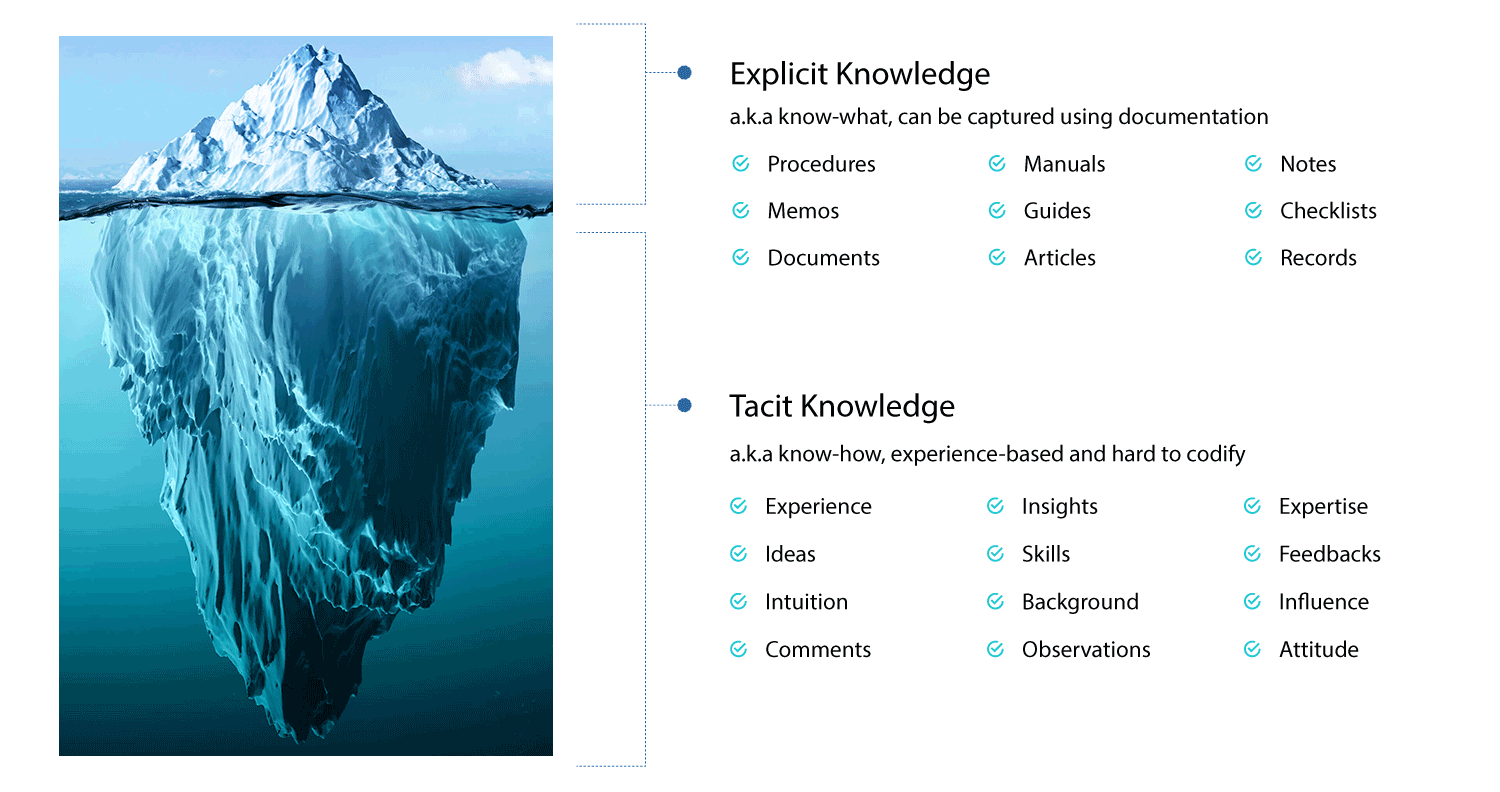Your Team's Collective Brain
Businesses love to say that their people are their most valuable asset. But if you dig a little deeper, you see that any business's most valuable asset is the knowledge their team possesses.
This knowledge includes everything from the most efficient way to accomplish a task to the best practices for dealing with customer complaints. Some of this knowledge ends up codified in documents and manuals. Much of this knowledge only exists in email threads or the minds of the most senior team members.
Every industry is dependent on knowledge workers. The top organizations in every sector are the ones that do the best job of harnessing and organizing the knowledge of their team. But many businesses and most knowledge management systems fail to appreciate that different types of knowledge need to be communicated in different ways.
Problems with Current Knowledge Management Systems
Most knowledge management systems want to be digital handbooks. Information is organized in documents, where static pages remain untouched and unvisited for years. Meanwhile, informal information networks like Slack channels, email threads, and quick questions from coworkers at nearby desks continue to be the primary way critical institutional knowledge is accessed.
Not all knowledge is the same.

There are two primary types of knowledge, explicit knowledge and tacit knowledge. Wikis are great at capturing explicit knowledge. But explicit knowledge is just the tip of the institutional knowledge iceberg.
Tacit knowledge includes experienced-based tips and tactics. It is much harder to codify because it is situationally dependent. Popular websites like Quora and Stack Overflow have shown that the best way to capture tactic knowledge is with a question and answer (Q&A) format. Other formats such as polls, idea posts, and short news bulletins also help capture institutional tacit knowledge.
However, most current knowledge systems would try and build a fancier digital encyclopedia rather than design a better way to document and organize mission-critical tacit knowledge.
How AllAnswered is Different
Here at AllAnswered, we approach the problem of documenting and organizing your institutional knowledge differently.
We started by making the information easy to capture, use, update, and access. Instead of limiting our solution to one type of content, we have created multiple content types. We also implemented built-in workflows and lifecycles so that information is always up to date and can be trusted.

- Pages - pages are designed to capture explicit knowledge. For pages that keep evolving, you can specify a review cycle, for example, every month, quarter, year, or whenever they are updated. A review workflow will be automatically created, and notifications will be sent out to the users who have been assigned to the task. For pages that are mainly stable once created, you can request ad-hoc reviews if you notice any issues with the content.
- Posts - posts are designed to capture tacit knowledge. The most commonly used posts are Q&As. It works very much like Quora or Stack Overflow, but is optimized for organization internal use. You can also create other posts such as polls, surveys, discussions, and announcements.
AI Assistant: Your Knowledge Companion
AllAnswered is designed for collaboration and powered by artificial intelligence. Our AI Assistant feature transforms how your team interacts with and maintains institutional knowledge:
🔍 AI-Powered Semantic Search - Find exactly what you need, even when you don't know the exact keywords. Our AI understands context and intent, surfacing relevant information from across your entire knowledge base.
💬 AI Assistant for Internal Knowledge - Get instant answers to your questions without interrupting colleagues. The AI Assistant draws from your organization's accumulated knowledge to provide accurate, contextual responses tailored to your specific needs.
✍️ AI-Assisted Content Drafting - Accelerate knowledge creation with intelligent content suggestions. The AI Assistant helps draft pages, posts, and answers based on your existing knowledge base, ensuring consistency and completeness.
🛠️ AI Agents Keeping Knowledge Up-to-Date - Never worry about outdated information again. Our AI agents continuously monitor your knowledge base, flagging content that may need updates and suggesting improvements based on usage patterns and emerging information.
Collaboration Without Interruption
The two most significant weaknesses of informal information sharing are that this model is inefficient and fragile. The most experienced team members are regularly interrupted to answer the same questions. If a senior team member leaves the organization, a significant amount of tactic institutional knowledge is lost.

AllAnswered recognizes the importance of both collaboration and productivity. Our platform allows for collaboration without interruption. All team members can easily share their experience and knowledge, and coworkers can access that knowledge without interrupting anyone else's workflow.
You can create communities with AllAnswered for specific teams, projects, or groups. You can set different levels of access control for every community you create.
Best of all, AllAnswered integrates with your existing processes and apps like Slack and Microsoft Teams. Our customers report an average 18% increase in productivity after using AllAnswered. Imagine what your company could do if you could get an 18% improvement on your most valuable asset.
Start your free trial or request a demo of AllAnswered today.



